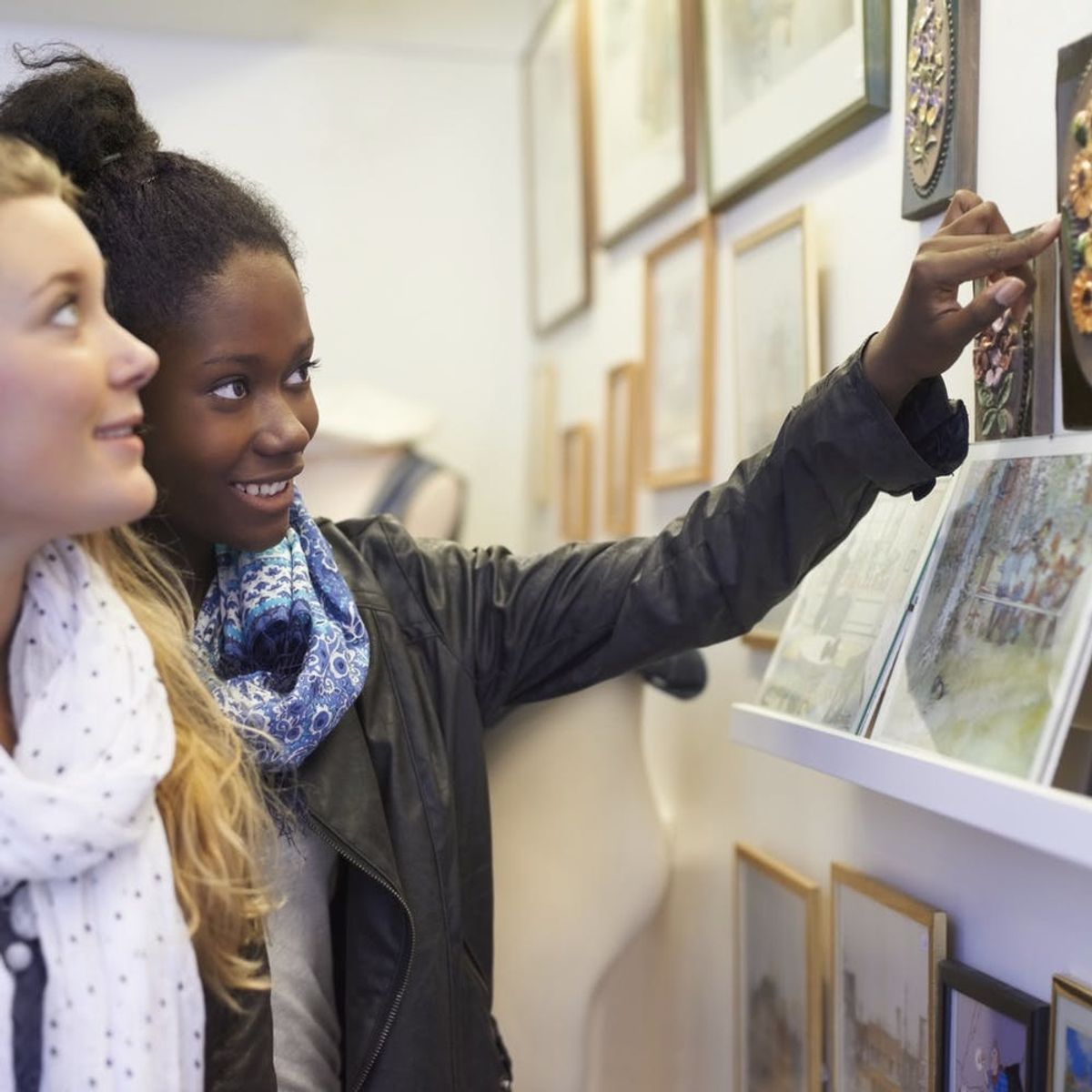Time to put that Chat Noir poster to bed.
Expert-Approved Advice on How to Start an Art Collection

You’ve finally moved into your own grown-up apartment, you’ve decorated your outdoor garden, bought your first few pieces of non-IKEA furniture and have your bedside table shelfie game on lock. Maybe you’ve even hosted your first dinner party? So we’re going to wager that those framed art posters and wall tapestry holdovers from college just aren’t cutting the canvas for you anymore. You know it’s time to start investing in actual art, but where to start? We get it — the art world can be an intimidating place, both with the people in it and the prices attached to it. But it totally doesn’t have to be! We talked with Quirk Gallery and Shop General Manager Adam Dorland on his tips for starting an art collection that’s wholly you. As an artist himself with over a decade experience working in film, theater and television as a scenic artist, Dorland knows a thing or two about art.
1. Expand your horizons. If you’re starting out with no real direction on the kind of art you’d like to buy for yourself, Dorland suggests visiting galleries and museums and even talking with your friends about the art in the next restaurant you go to. This’ll help you get “outside perspective and appreciation [that] can sometimes make you feel something or see something that wasn’t there before,” Dorland says. He goes on to say that “it’s the ability to have a conversation about art beyond ‘I don’t get it’ or ‘I don’t like this’ that nurtures the appreciation of art,” so it’s important to branch out from what you may already know to find things you’re probably going to love.
2. Start small. “Maybe start with a few screen prints or smaller works that you frame yourself,” Dorland advises, if you’re feeling unsure about where to start. Many major artists who produce art worth thousands of dollars also make prints of their work at a much more manageable price point, so you can bring a piece home without breaking the bank.
3. If you like it, buy it. Dorland doesn’t believe in buying art for a particular place in your home or passing up a coveted piece just because you don’t currently have a spot in mind to hang it. “If you love a piece enough to look at it every day, you’ll find the right place for it,” he says. His biggest piece of advice is to “buy things you can’t live without,” since art should make you feel something.
4. Mix eras and aesthetics. Matching your couch to your art is a thing of the past. Instead, Dorland suggests mixing eras and periods of design to “contribute to [your] personal aesthetic,” and that “these elements and ideas work for your furniture just as well as your art collection.” Your art collection should be a reflection of your taste, so if you’re into both oil still lifes and landscape photography, by all means, buy it all!
5. Don’t focus on potential value. You often hear of major collectors snapping up an entire artist’s show because the painter is positioned to become valuable, financially speaking. Dorland says that, while that does happen, he’s never done it himself, so there’s no need to feel intimidated or priced out just because you’re not an Art Collector with a capital A-C.
Are you looking to start an art collection? Tweet us @BritandCo and tell us your dream artist you’d like to collect!



















